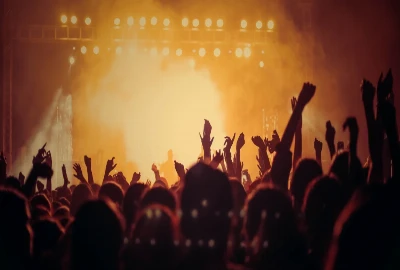Fandom Power: How Online Communities Are Steering Studio Decisions

The entertainment industry has always been shaped by audiences, but never before have fans had so much direct influence. In the digital era, fandoms aren’t just passive consumers—they’re powerful communities capable of steering creative decisions, reviving canceled projects, and reshaping the way studios think about storytelling. From Twitter hashtags to Reddit forums, online communities wield unprecedented cultural and commercial power. This blog explores the rise of fandom power in entertainment, the ways fans interact with creators, and what this means for the future of film, TV, and music.
The Rise of Digital Fandom Communities

From fan clubs to online networks
In the past, fandom existed through magazines, conventions, and fan mail. While dedicated, these groups had limited reach. The internet transformed fandom into a global, real-time network. Online communities can mobilize within hours, amplifying their voices on platforms like Twitter, TikTok, and Discord.
The democratization of influence
What once required industry insiders now lies in the hands of audiences. Social media allows fans to campaign for sequels, defend their favorite actors, or protest storylines. The digital era gives every fan a megaphone.
Case studies of fan mobilization
Movements like the #ReleaseTheSnyderCut campaign or the revival of shows like Brooklyn Nine-Nine demonstrate how online pressure translates into real-world results. These successes show that when fandoms unite, studios listen.
How Fandom Shapes Studio Decision-Making

Casting and character arcs
Studios now monitor online sentiment closely. Fan backlash against casting decisions—or overwhelming support for certain actors—can influence changes in direction. Characters once written off may return due to fan demand.
The role of analytics and algorithms
Streaming services track viewing habits and engagement, giving concrete data on what fandoms care about. This information often drives renewals, spinoffs, and merchandising strategies.
Fan expectations versus creative control
Studios must balance fan desires with artistic vision. Over-reliance on fandom pressure risks creative stagnation, but ignoring them risks alienating core audiences.
Social Media as a Tool of Fan Power

Hashtag activism and viral campaigns
Social media platforms allow fandoms to organize massive campaigns. Hashtags like #SaveOurShow or #JusticeForCharacters trend globally, pressuring studios into public responses.
Fan-made content as influence
Fan art, edits, and theories spread rapidly online, sometimes influencing how studios market or expand a franchise. Viral content often demonstrates untapped audience demand.
Direct communication with creators
Platforms like Twitter and Instagram have blurred the lines between fan and creator. Directors, writers, and actors engage directly with fandoms, shaping projects in real time.
The Economics of Fandom-Driven Decisions

Box office and streaming numbers
Fandoms are economic engines. Loyal fanbases drive opening weekend ticket sales, subscription spikes, and merchandising. Ignoring them can mean financial losses.
Crowdfunding and fan-funded projects
Some creators bypass studios altogether, using platforms like Kickstarter to fund projects directly supported by fans. This proves the economic viability of dedicated communities.
The merchandising machine
Fandom isn’t just about content consumption—it’s about collectibles, clothing, and experiences. Studios that nurture fandoms see long-term profits beyond initial releases.
The Double-Edged Sword of Fan Power

Positive outcomes
Fan activism has led to more diverse casting, representation, and inclusive storytelling. Communities often push for progressive changes that broaden entertainment’s reach.
The downside of toxic fandom
Not all fan influence is positive. Harassment campaigns, entitlement, and online bullying can create hostile environments for creators and performers. This darker side of fandom power raises ethical questions.
Balancing fan service with innovation
Creators must walk a fine line. Leaning too heavily on fan service risks predictable storytelling, while ignoring fans entirely risks backlash. The healthiest projects strike a middle ground.
Fandom as Cultural and Political Force

Beyond entertainment
Fandoms increasingly mobilize around social causes. Communities built around pop culture often leverage their networks to raise awareness, fundraise, or protest larger societal issues.
The role of representation
Fans champion diverse representation in film, TV, and music, demanding stories that reflect the world they live in. Their advocacy has changed casting and narrative trends across the industry.
Community identity and belonging
Fandom provides identity and belonging for many. Online groups become safe spaces where people connect not just over stories but over shared values and social goals.
The Future of Fandom Power in Entertainment

Studios embracing collaboration
More studios now view fans as collaborators rather than consumers. Interactive campaigns, voting systems, and fan events encourage audiences to feel invested in storytelling.
The rise of participatory entertainment
Emerging technologies like VR, AR, and AI could allow fans to co-create content in new ways. Future fandoms may directly shape narratives, not just react to them.
Will fandoms replace critics?
Traditional critics once held the power to make or break a project. Today, fan reactions often dominate the cultural narrative. Studios may increasingly prioritize fan feedback over critical reviews.



